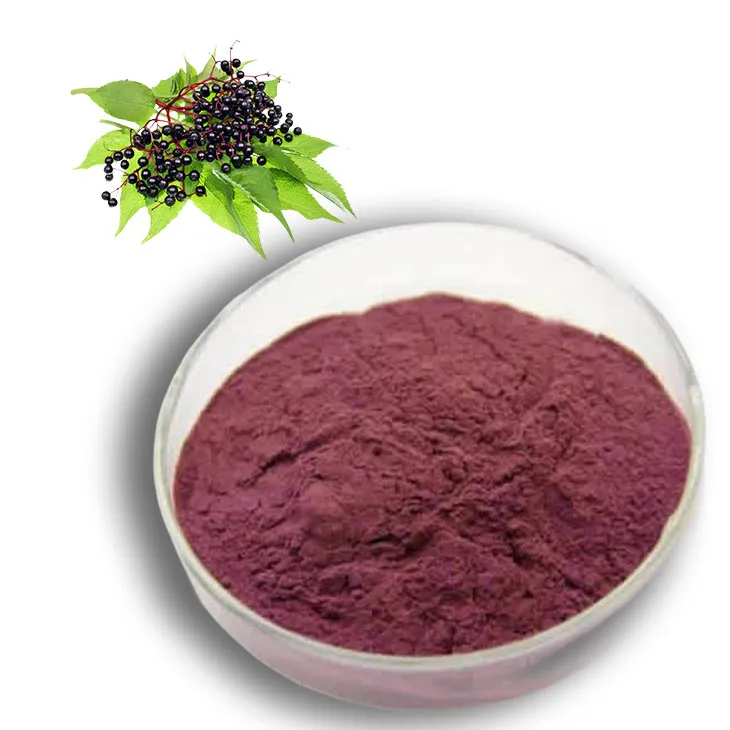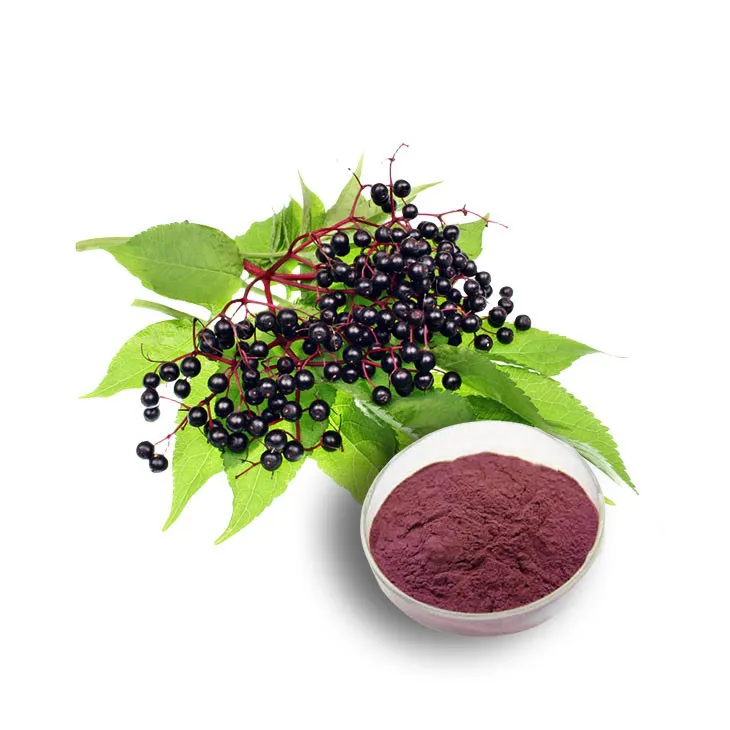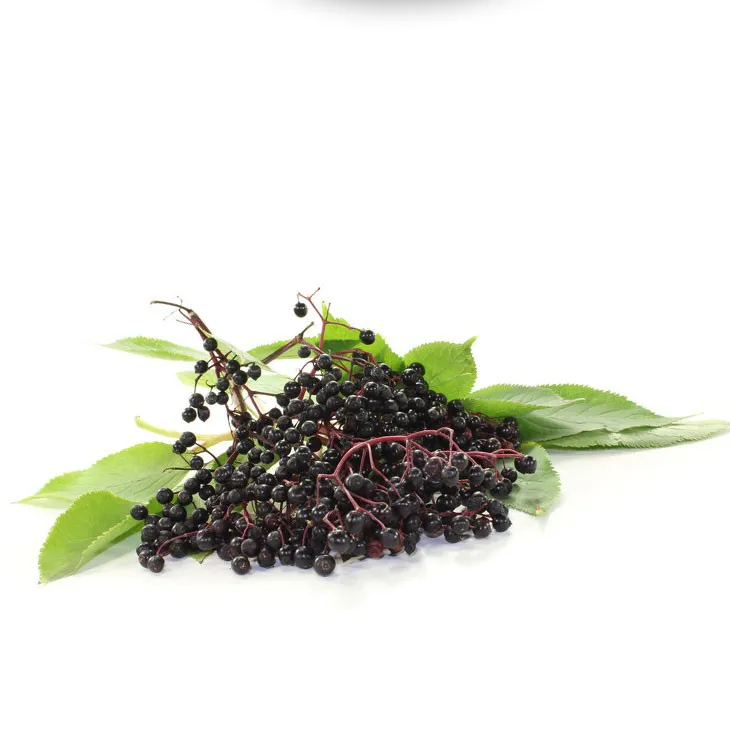- 0086-571-85302990
- sales@greenskybio.com
How to extract elderberry extract from plants?
2024-11-29

1. Introduction
Elderberries have been used for centuries due to their potential health benefits and various applications in different industries. Elderberry Extract is rich in antioxidants, vitamins, and other bioactive compounds. Understanding how to extract it from plants is crucial for maximizing its potential uses. This article will explore the entire process from harvesting elderberries to the final extraction, covering both traditional and modern techniques, as well as factors affecting yield and quality. Additionally, we will look at how this natural extract is utilized in medicine, cosmetics, and other fields.

2. Harvesting Elderberries
2.1. Timing
The timing of harvesting elderberries is crucial. Elderberries are typically ready for harvest in late summer to early fall. It is important to wait until they are fully ripe. Ripe elderberries are dark purple or black in color. Harvesting too early can result in lower levels of active compounds in the extract.2.2. Selection
When selecting elderberries for extraction, it is necessary to choose healthy berries. Avoid berries that are damaged, moldy, or diseased. Only high - quality berries should be used to ensure a good - quality extract.2.3. Collection Method
Elderberries can be collected by hand - picking or using appropriate harvesting tools. Hand - picking is more time - consuming but allows for more careful selection. If using tools, make sure they do not damage the berries or the plant itself.
3. Traditional Extraction Techniques
3.1. Infusion
- Infusion is one of the simplest traditional methods. First, the elderberries are crushed gently to break the skin and release some of the juices.
- Then, they are placed in a container with a suitable solvent, usually hot water. The ratio of elderberries to water can vary, but a common ratio is about 1: 5 (berries to water).
- The mixture is left to steep for a period of time, typically 1 - 2 hours. During this time, the active compounds in the elderberries are transferred into the water.
- Finally, the liquid is strained through a fine - mesh sieve or cheesecloth to separate the solid berries from the extract. The resulting liquid is the elderberry infusion, which can be used as it is or further processed.
3.2. Decoction
- Decoction is a more intense form of extraction. In this method, the elderberries are first chopped or ground into smaller pieces.
- They are then placed in a pot with water and brought to a boil. The boiling process helps to extract more of the tough - to - get compounds from the berries.
- After boiling for a certain period, usually 15 - 30 minutes, the mixture is allowed to cool slightly and then strained. The resulting liquid is the decocted Elderberry Extract.

4. Modern Extraction Techniques
4.1. Maceration with Solvents
- Modern extraction often involves the use of solvents other than water. Maceration with solvents such as ethanol or ethyl acetate is common.
- The elderberries are first dried and then ground into a fine powder. The powder is placed in a container with the chosen solvent in a suitable ratio.
- The mixture is left to macerate for a period, which can range from a few hours to several days, depending on the nature of the compounds to be extracted and the solvent used.
- After maceration, the mixture is filtered to obtain the solvent - based Elderberry Extract. The solvent can then be evaporated under controlled conditions to obtain a more concentrated extract.
4.2. Supercritical Fluid Extraction
- Supercritical fluid extraction (SFE) is a relatively advanced technique. In this method, a supercritical fluid, usually carbon dioxide (CO₂), is used as the extraction medium.
- Carbon dioxide is in a supercritical state when it is above its critical temperature and pressure. In this state, it has properties of both a gas and a liquid, making it an excellent solvent for extracting bioactive compounds from elderberries.
- The elderberries are placed in an extraction vessel, and the supercritical CO₂ is passed through the berries. The bioactive compounds are selectively dissolved in the CO₂.
- By adjusting the temperature and pressure, the selectivity of the extraction can be controlled. After extraction, the CO₂ is depressurized, and the extract is collected.
5. Factors Affecting Yield and Quality of Elderberry Extract
5.1. Raw Material Quality
- As mentioned earlier, the quality of the elderberries used for extraction plays a significant role. High - quality, ripe, and healthy berries will generally yield a higher - quality extract with more active compounds.
- Berries that are of poor quality, such as those that are unripe or damaged, may result in a lower - quality extract with reduced levels of bioactive substances.
5.2. Extraction Method
- Different extraction methods can have different effects on yield and quality. For example, modern solvent - based methods may be able to extract a wider range of compounds compared to traditional water - based methods.
- Supercritical fluid extraction can often produce a more pure and concentrated extract with better preservation of bioactive compounds compared to other methods.
5.3. Processing Conditions
- The temperature, pressure, and extraction time are important processing conditions. In traditional decoction, if the boiling time is too long, some of the heat - sensitive compounds may be degraded, affecting the quality of the extract.
- In solvent - based extraction, the choice of solvent, its concentration, and the maceration time all impact the yield and quality of the extract.
6. Applications of Elderberry Extract in Different Industries
6.1. Medicine
- Elderberry extract has been studied for its potential immune - boosting properties. It may help in reducing the duration and severity of colds and flu.
- Some research suggests that it has anti - inflammatory effects, which could be beneficial in treating certain inflammatory diseases.
- It may also have antiviral and antibacterial activities, making it a potential natural alternative for treating infections.
6.2. Cosmetics
- In the cosmetics industry, elderberry extract is used for its antioxidant properties. Antioxidants help in protecting the skin from free radical damage, which can lead to premature aging.
- It can be incorporated into skincare products such as creams, lotions, and serums to improve skin health and appearance.
- Elderberry extract may also have moisturizing properties, helping to keep the skin hydrated.
6.3. Food and Beverage
- Elderberry extract can be used as a natural flavoring agent in food and beverages. It adds a unique flavor that is both sweet and tart.
- It is also used in the production of dietary supplements, such as capsules or syrups, due to its potential health benefits.
7. Conclusion
Extracting elderberry extract from plants is a complex process that involves multiple steps from harvesting to the final extraction. Both traditional and modern extraction techniques have their own advantages and are used depending on the specific requirements. The yield and quality of the extract are influenced by various factors, including raw material quality, extraction method, and processing conditions. Elderberry extract has a wide range of applications in medicine, cosmetics, food, and beverage industries, which makes its extraction from plants a topic of great interest. Continued research in this area is likely to lead to improved extraction methods and a greater understanding of the potential benefits of elderberry extract.
FAQ:
What are the traditional methods for extracting elderberry extract?
Traditional methods for extracting elderberry extract often involve maceration and decoction. Maceration is a process where the elderberries are soaked in a solvent, such as alcohol or water, for a period of time. This allows the active compounds in the berries to dissolve into the solvent. Decoction is another traditional method where the elderberries are boiled in water. The heat helps to break down the plant material and release the desired components into the water. However, these traditional methods may have some limitations in terms of efficiency and the purity of the extract obtained.
What are the modern extraction techniques for elderberry extract?
Modern extraction techniques for elderberry extract include supercritical fluid extraction (SFE) and ultrasonic - assisted extraction (UAE). SFE uses supercritical fluids, often carbon dioxide, as the solvent. It has the advantages of being highly selective, producing a high - quality extract with less solvent residue. UAE, on the other hand, uses ultrasonic waves to enhance the extraction process. The ultrasonic waves create cavitation bubbles in the solvent, which helps to break down the cell walls of the elderberries more effectively, leading to increased extraction efficiency.
What factors affect the yield of elderberry extract?
Several factors can affect the yield of elderberry extract. The maturity of the elderberries at the time of harvest is crucial. Ripe berries generally contain more of the desired compounds, so harvesting at the right time can increase the yield. The type of solvent used also plays a role. Different solvents have different affinities for the active components in the elderberries. Additionally, the extraction time, temperature, and the ratio of plant material to solvent can all impact the yield. Longer extraction times, appropriate temperatures, and an optimal ratio can potentially lead to a higher yield.
How does the quality of elderberry extract be determined?
The quality of elderberry extract can be determined in several ways. One important aspect is the content of the active compounds. Analytical techniques such as high - performance liquid chromatography (HPLC) can be used to measure the levels of specific bioactive substances in the extract. The purity of the extract is also a factor. A high - quality extract should have minimal impurities, which can be assessed through various purification and analysis methods. The stability of the extract over time is another consideration. It should maintain its potency and not degrade easily, which can be evaluated through stability testing.
What are the applications of elderberry extract in the medicine industry?
In the medicine industry, elderberry extract has several applications. It has been studied for its potential antiviral properties, especially against influenza viruses. Some research suggests that it can stimulate the immune system, helping the body to fight off infections. Elderberry extract may also have anti - inflammatory effects, which could be beneficial in treating certain inflammatory conditions. Additionally, it may be used in the development of dietary supplements aimed at promoting general health and well - being.
Related literature
- Elderberry Extract: Production, Properties and Applications"
- "Modern Extraction Techniques for Bioactive Compounds from Elderberries"
- "Factors Influencing the Quality and Yield of Elderberry Extracts: A Review"
- ▶ Hesperidin
- ▶ Citrus Bioflavonoids
- ▶ Plant Extract
- ▶ lycopene
- ▶ Diosmin
- ▶ Grape seed extract
- ▶ Sea buckthorn Juice Powder
- ▶ Fruit Juice Powder
- ▶ Hops Extract
- ▶ Artichoke Extract
- ▶ Mushroom extract
- ▶ Astaxanthin
- ▶ Green Tea Extract
- ▶ Curcumin
- ▶ Horse Chestnut Extract
- ▶ Other Product
- ▶ Boswellia Serrata Extract
- ▶ Resveratrol
- ▶ Marigold Extract
- ▶ Grape Leaf Extract
- ▶ New Product
- ▶ Aminolevulinic acid
- ▶ Cranberry Extract
- ▶ Red Yeast Rice
- ▶ Red Wine Extract
-
Fig Extract
2024-11-29
-
Medicinal Marshmallow Extract
2024-11-29
-
Pueraria Lobata Extract
2024-11-29
-
Curcumin
2024-11-29
-
Alfalfa Meal
2024-11-29
-
Buckthorn bark extract
2024-11-29
-
Phyllanthus Emblica Extract
2024-11-29
-
Bayberry Extract
2024-11-29
-
Reishi mushroom extract
2024-11-29
-
Chaste Berry Extract
2024-11-29





















